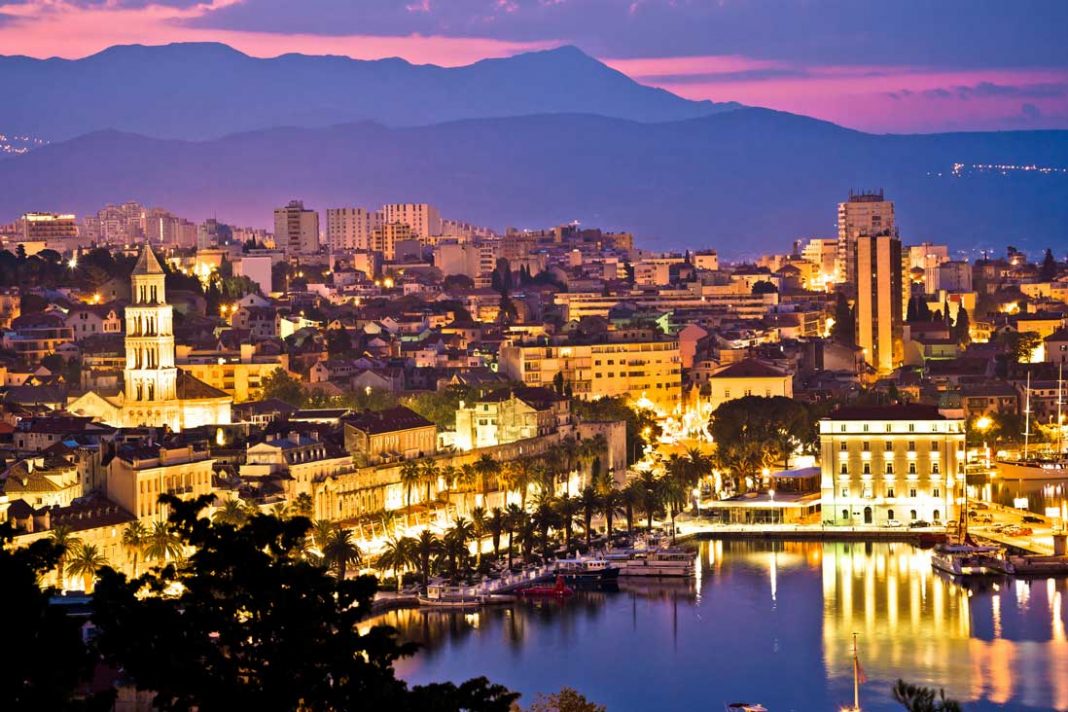Split, Croatia lies in a beautiful coastal position on the Adriatic Sea. Like all travel destinations, it holds a range of places to go and things to see. Each tourist site reveals an original thing – a story. The history of Split is vast and rich. The best way to learn is to the follow the stories scattered about the town. Read ahead for our favorite stories of Split – the best and most popular.
Table of Contents
Roman History
The split is alive with stories of Roman history. Diocletian’s Palace dominates the city. It is essentially an extravagant retirement home. In the 4th Century, the Roman Emperor, Diocletian, built it to settle down in during old age. The ruins are also rich with the history of military barracks protecting him.
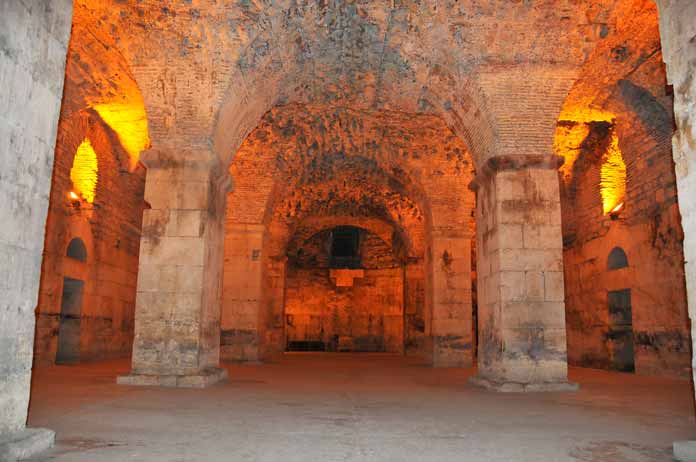
The old town orientates itself around this history. The labyrinth of small narrow streets is a part of this fortress. Just across the Adriatic Sea from Italy, the Roman Empire occupied Croatian land. The split has beautified that colonial history. Invasive kingdoms are now magnificent ruins. Romans still guard the entrances – only, today you can have your picture taken with them.
The Roman history is probably the story that most permeates the streets of Split. So, be sure to hold it in your mind as you walk them.
A Statue
In the 10th Century, Gregory of Nin fought for the integrity of Croatian language and culture. He was a bishop who openly defied the rulings of the Pope and other officials on the Church. At the time, masses were exclusively in Latin. He insisted that the services of his country were in the native Croatian tongue. Many people did not understand Latin. The unnecessary language barrier was restricting the teaching of religion. From his insistence, he changed history. Gregory of Nin introduced the rule: from now on mass was in the national language of every country.
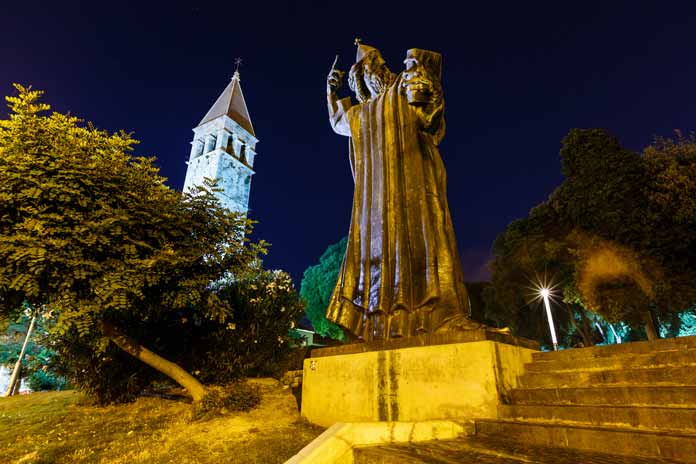 His influence affected not just the spiritual strength of Croatia, but the culture too. In striving to uphold the language and essence of the country, he allowed for national solidarity and pride. Today, his statue lies in the center of Split. It is a robust and definite representation, large and powerful.
His influence affected not just the spiritual strength of Croatia, but the culture too. In striving to uphold the language and essence of the country, he allowed for national solidarity and pride. Today, his statue lies in the center of Split. It is a robust and definite representation, large and powerful.
The story goes that if you touch the toe of the statue, you will gain good luck, and return to Split. You will quickly recognize it, golden at the foot of the statue and worn down from thousands of touches. Be sure to do so when you visit this place – you will want to come back to Split.
Marjan Hill
On the far side of town, a hill guides you up to a lookout over Split. One of the best stories in this beautiful place lies in a tiny old church at the top. It is small and made of the same simplistic stone. It has only a door and a bell. It dedicates itself to St Nicholas, the traveler.
It was created in 1219. A Split civilian built the church and donated it to a religious abbey. Benedictine monks, hermits, and the Marjan society have all inhabited it in its time. The stunning views that surround the church magnify the aesthetics of the story. The story is a simple and lovely one, centered on magnificent, beautiful settings.
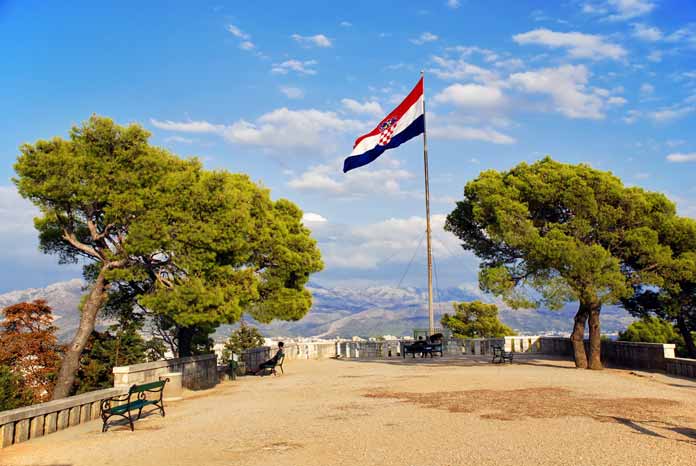 Stories lie all around the park at the summit of Marjan Hill. They are in the pathways that traverse it and other churches and buildings that occupy it. It is a favorite destination for travelers and locals. The fantastic view of the sea, mountains, and town are timeless – the same witnessed by St Nicolas and many other local historical figures.
Stories lie all around the park at the summit of Marjan Hill. They are in the pathways that traverse it and other churches and buildings that occupy it. It is a favorite destination for travelers and locals. The fantastic view of the sea, mountains, and town are timeless – the same witnessed by St Nicolas and many other local historical figures.
Markets
As with most markets, the ones the Split are full of history. Markets seem inevitable to hold stories, as they are timeless symbols of civilization. Those of this town is no exception. Daily stalls sell food on the waterside – a tradition that has continued for centuries. The fish market adheres to the local history of a coastal town, dependent on its fishing economy. Now, the city industry bases itself more on tourism – and the markets reveal this as well.
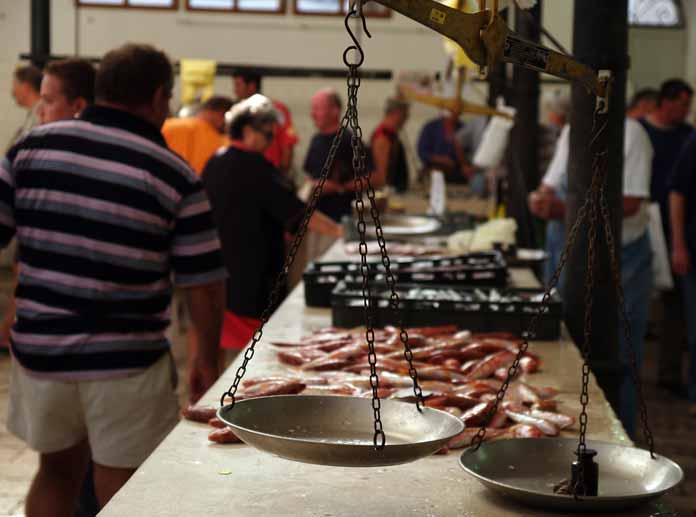 Underneath the walls of the Roman ruins, indoor stalls line the basements. Local artists and creatives sell handmade jewelry, local crafts, and original paintings. They provide unique souvenirs and artistic gifts. True, they are full of tourists, but for a good reason – the products are beautiful and not at all overpriced.
Underneath the walls of the Roman ruins, indoor stalls line the basements. Local artists and creatives sell handmade jewelry, local crafts, and original paintings. They provide unique souvenirs and artistic gifts. True, they are full of tourists, but for a good reason – the products are beautiful and not at all overpriced.
Wander through these markets and absorb the stories that they hold. Locals gather here and exchange conversation as well as goods. You will find geological history in the stones that line the earrings and necklaces. You will find creative history in the artwork sold. All of these little histories contribute to the larger narrative of the town. Markets are a place of unity – where various stories come together.
Religious History
It is already apparent that religious stories are central to Split. The Cathedral of Saint Dominus strongly reinforces this. Its presence encapsulates the historical, spiritual essence of the town. It protrudes high over the Split skyline, asserting a dominance that has existed since the 7th Century.
The story? Its name is the patron saint of Split – Dominus. He died a martyr, defending Christianity against the persecution of the Romans. Its history holds a mixture of intentions and purposes. It was partly adopted by the Roman Emperor St Dominus fought against. The mausoleum section was Diocletian’s, the owner of the palace. However, there are small features that reinstate the essential Croatian spirit of the Cathedral. A local sculptor intricately designed and created the impressive Cathedral doors. Pictures carved into the wood reveals scenes from the life of Jesus. More stories to add to the many ones of Split.
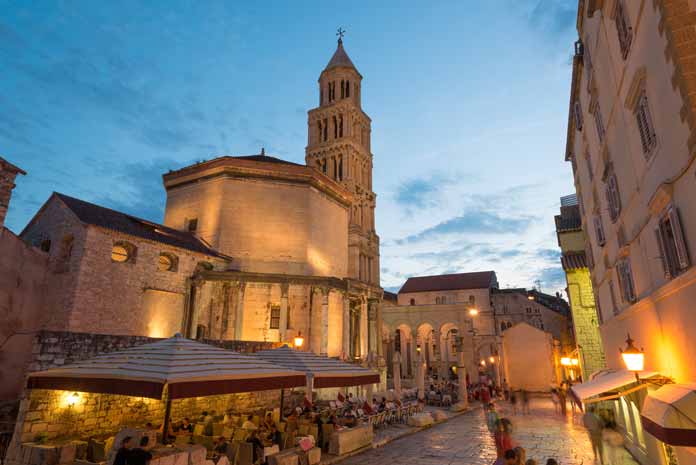
Stories have an exceptional ability to add an extra layer to the standard travel experience. Endowing a place with a narrative provides an aesthetic appeal as well as giving an in-depth knowledge of history. Split, Croatia holds many stories that indeed allow for a richer cultural experience. Some of the stories are simple ones – those of local markets and small Parish churches. Some extend into some of the greatest historical periods known to humanity – the rise of the Church and the expansion of the Roman Empire. Stories hold a power of their own. You can experience them, as well as tell them. We have told you some stories. However, when traveling to Split, Croatia – be sure to experience them for yourself.

